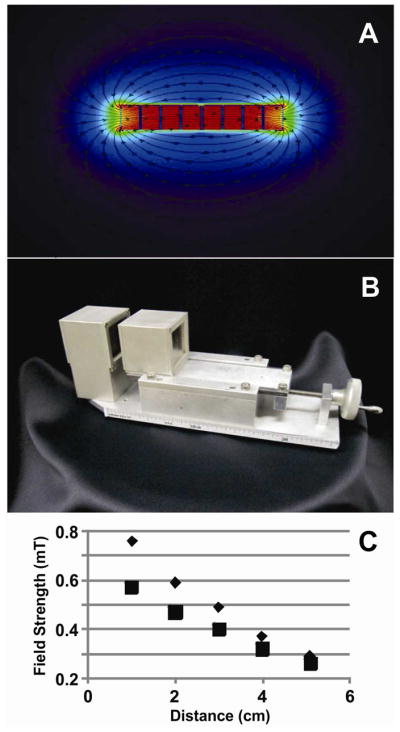Figure 1.

Characterization of magnet configuration. (A) Magnetic simulations of a cavity defined by two sets of four magnets each. This configuration shows a field strength of 817 mT when the gap is 1 cm. The simulation was done with Vizimag software. (B) On-line magnetic isolation device. (C) Field strength measurements at the center of the magnet cavity. Triangles and squares represent the experimental and the simulation data, respectively. Simulation data fitted the equation y = 0.0058x2 – 0.11x + 0.67 and predicted magnetic field strengths of 650 and 670 mT for gaps equivalent to those used for PEEK tubing and fused-silica capillary, respectively. Experimental data fitted the equation y = 0.012x2 – 0.19x + 0.93 and predicted magnetic field strengths of 900 and 930 mT for gaps equivalent to those used for PEEK tubing and fused-silica capillary, respectively.
